- Home
- entertainment
- news
- 9 nightmarish things in 'The Handmaid's Tale' inspired by history
9 nightmarish things in 'The Handmaid's Tale' inspired by history
Michelle Regalado

- Hulu's series "The Handmaid's Tale" is based on Margaret Atwood's dystopian book by the same name.
- Atwood was inspired by biblical passages, Salem witch trials, and American politics in the 1980s.
"The Handmaid's Tale" may be set in a totalitarian dystopia, but it's completely science fiction.

Almost every aspect of the book is steeped in religious and political history. Author Margaret Atwood has spoken at length about how she drew from actual global events to create the world of Gilead and the atrocities committed within it. Its real-life origins are also largely why the book remains so relevant today, more than 30 years after its publication.
Though Hulu's adaptation of "The Handmaid's Tale" has sometimes varied from the 1985 novel, the themes and parallels to real-world happenings remain the same. From the rise of religious sects to giving birth in public, here are some of the historical precursors to Atwood's story.
The concept of using handmaids to battle infertility is inspired by a biblical story.
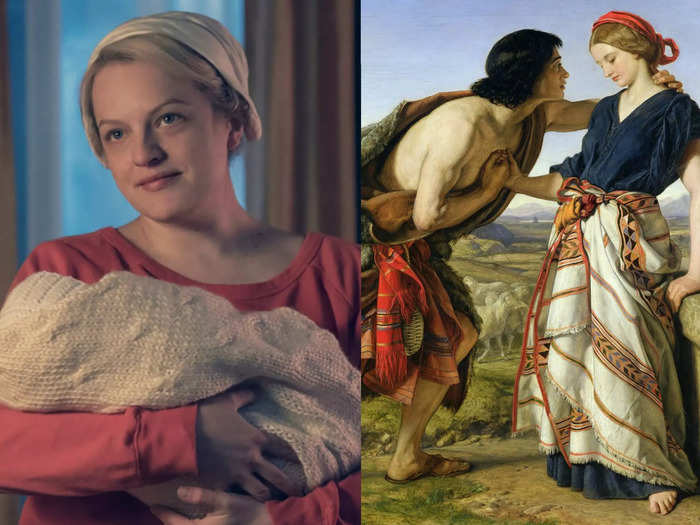
In both the show and the book, Handmaids are forced to give birth to children by high-ranking men after they are subjected to ritualized rape by those same men. The wives and husbands then raise those children while the Handmaids are transferred to another household.
The Handmaids are trained for their new roles at Gilead's The Rachel and Leah Center (aka The Red Center).
The center is a direct reference to the Old Testament story of Rachel and her sister Leah, both of whom married Jacob. While Leah had no trouble conceiving children, Rachel was unable to get pregnant. Frustrated, Rachel offered up her handmaid, Bilhah, to Jacob as a "vessel" through which she could have children. Bilhah gave birth to two sons, both of whom were named by Rachel.
The story serves as an inspiration not only for the role of the Handmaids as "breeders," but for the entire founding of Gilead. The group that overthrew the United States government and established Gilead in Atwood's dystopian novel is named Sons of Jacob.
"Blessed be the fruit" is also biblically inspired.

"Blessed be the fruit." "May the Lord Open." It's an exchange seen depicted countless times in "The Handmaid's Tale."
The handmaids' mandated greetings to each other and other Gilead residents have become well-known in the wake of the show, but their origins can also be traced back to the bible.
The phrases are found in Deuteronomy 28 as part of the Blessings of Obedience and are meant to encourage plentitude to faithful followers. Those who "heed the voice of the Lord, your God" will receive blessings, the passage states. It goes on to read "Blessed be the fruit of your womb" (Deuteronomy 28:4, New American Bible), followed later by "The Lord will open for you" (Deuteronomy 28:12)."
The persecution of women in Gilead is partially inspired by a real-life "witch."
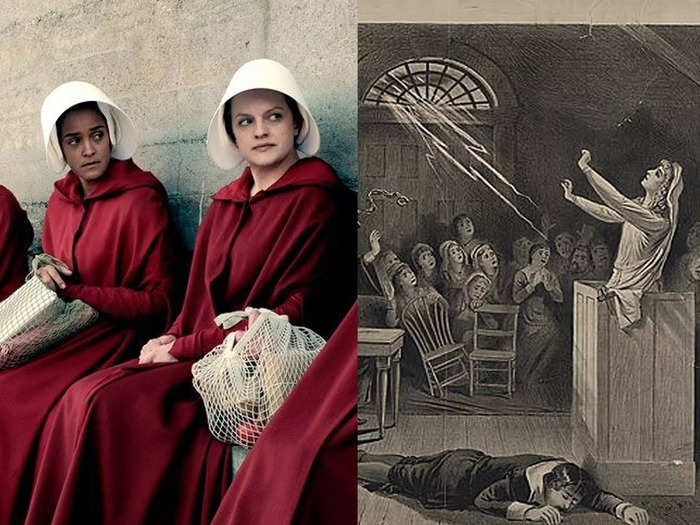
Atwood has made no secret that "The Handmaid's Tale" takes inspiration from the Salem witch trials and the demonizing, threatening, and even killing of innocent women that took place during that time.
She cites one woman's story as a particularly major influence of the book — that of 17th century New England resident, Mary Webster.
Webster was at the center of one of the most infamous "witchcraft" cases preceding the Salem witch trials. After a well-respected government and church leader in the small Puritan town of Hadley, Massachusetts, fell ill, locals quickly drew the conclusion that a witch had to be involved. They fingered Webster as the culprit and decided to physically assault her and hang her as punishment. She survived, but her story, recounted in detail in 1689's "Memorable Providences," set the stage for the Salem witch hysteria that began in 1692.
"'The Handmaid's Tale' is dedicated to Mary Webster because she is an example of a female person wrongly accused," Atwood told PRI's The World. "But she is slightly a symbol of hope because they didn't actually manage to kill her. She made it through."
The rise of the Christian right in "The Handmaid's Tale" draws from American history.

To depict the authoritative world run by the extremely religious right in "The Handmaid's Tale," Atwood drew upon history — mainly, 17th-century Puritan theocracy in America and the political climate of the country in the early 1980s.
"America was not initially founded as an 18th-century enlightenment republic. It was initially a 17th-century theocracy. That tendency keeps bubbling up in America from time to time," Atwood said in a 2017 interview with Indigo.
She also points to the election of Ronald Reagan as president and the country's embrace of Christian conservatism as influences for the book. In 1981, Reagan became the first president to propose a constitutional amendment seeking to restore organized prayer in schools.
Throughout his candidacy and into his presidency, Reagan also closely aligned himself with religious political organizations, like the Moral Majority and Focus on the Family. The temporary rise in power of these groups caused a feared crackdown on women's access to abortion.
It's worth noting that this particular aspect of "The Handmaid's Tale" continues to resonate in modern-day society amid the overturning of Roe v. Wade and other abortion-related legislation.
Giving birth in public is a practice royals in the 17th and 18th centuries used to follow.
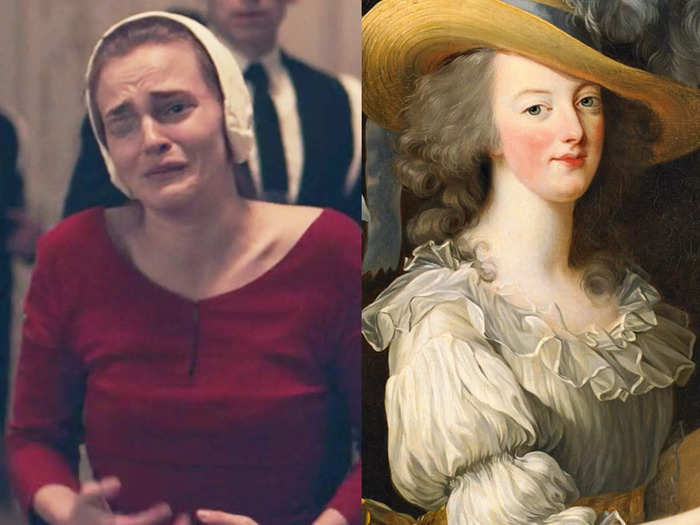
These days, births are usually conducted in private rooms in a hospital or home, depending on the family's preference. On "The Handmaid's Tale," handmaids must give birth in front of dozens of others, including fellow Handmaids and Aunts (such as Aunt Lydia on the show).
Royals of the 1600s and 1700s followed a similar custom. Women gave birth in front of crowds of people to prevent any suspicion of switching the royal baby for another. According to The Guardian, "witnesses were considered essential" during the birth of a potential heir and rooms would be filled with "ladies-in-waiting, midwives, servants, and doctors, with the male courtiers hovering in the background."
Some reports even claim that Marie Antoinette almost died during her birth after hundreds of people poured into the room following the announcement of the event.
The incarceration of "promiscuous" women can be drawn back to a 20th-century US program.

In "The Handmaid's Tale," women who are seen as promiscuous or sinners (including lesbians, abortion patients, etc.) are sent to labor camps, where they often die from the toxic conditions.
The concept of incarcerating women deemed as immoral dates back to a little-known part of American history. As Time reports, this practice was common in the early 1900s during the implementation of the American Plan.
The program was launched around WWI as a means of protecting American soldiers from sexually transmitted infections and prostitution. Under the plan, thousands of women suspected of carrying STIs or general promiscuity were detained and locked up in jails and work hours — all under the justification of ensuring national security.
Historian Scott Stern has called the American Plan "one of the largest and longest-lasting mass quarantines in US history."
The underground rebellion of handmaids in Gilead echoes how women fought back in the early 1900s.
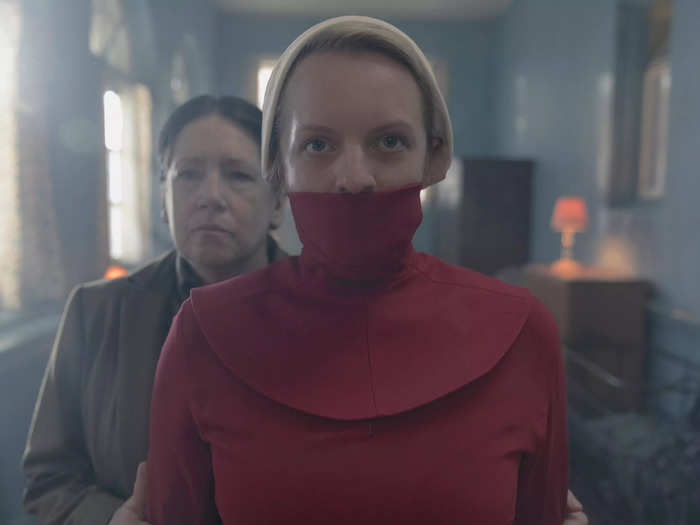
"The Handmaid's Tale" depicts a quiet underground rebellion among some of the women of Gilead, known as the Mayday resistance. Again, there's a parallel between their battle and the revolt of the women in the 20th century under the American Plan.
As Stern told Time, "In real female prisons — under the American Plan and in women's prisons in general — there were huge numbers of riots. There were huge, truly mind-numbing numbers of women who escaped."
But he does note one significant difference: While many of the rebels leading the charge in "The Handmaid's Tale" are depicted as educated white women (at least on the show), the American Plan disproportionately targeted non-white, working-class, and immigrant women.
Atwood found precedent for public executions in global history.
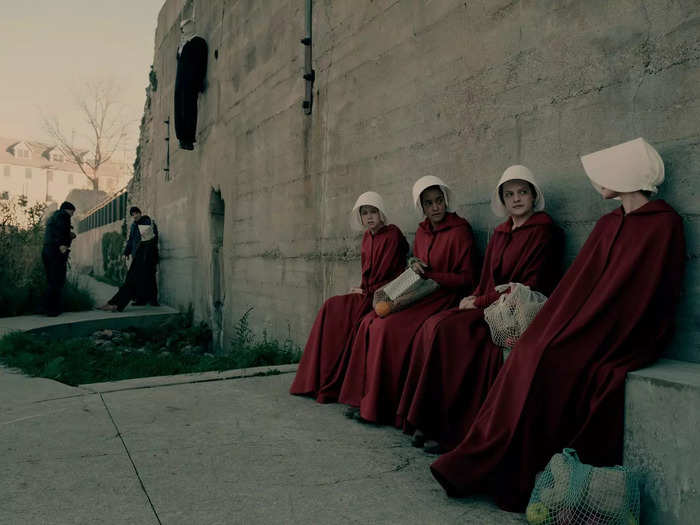
In Gilead, leaders use the threat of public execution to keep its citizens in line, often hanging presumed traitors on a wall out in the open. Even Handmaids are expected to carry out executions from time to time, as portrayed in both the book and the show's freshman season.
Public executions like these were once commonplace around the world, from Ancient Greece to 20th-century America.
Atwood has also previously drawn comparisons between the practice in "The Handmaid's Tale" and 19th-century literature based on true events.
"In Émile Zola's novel 'Germinal,' which is based on real-life 19th-century coal-mining enterprises, the guy who runs the company store is exacting sex from the wives and daughters of the coal miners in order to sell them goods because they didn't have any money. So when the women get the chance, they tear him apart, and put not his head but his genitalia on a pike, and parade it around," she told The New York Times.
The forced separation of mothers and children continues to occur in modern society.
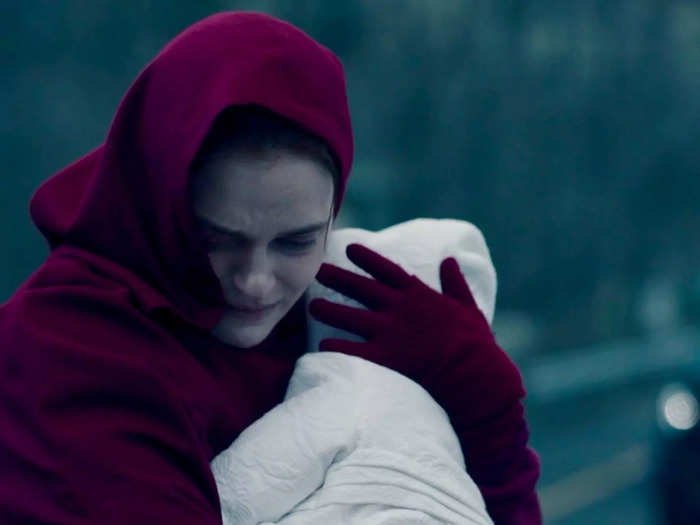
As in real-life totalitarian regimes of decades past, Gilead controls the distribution of children in "The Handmaid's Tale," forcing Handmaids to hand the care and control of their babies over to the families they work for almost immediately after birth. To flesh out this plot point, Atwood pointed to historical antecedents, including the horrific practices of Adolf Hitler in World War II.
"Totalitarianism always has views on who shall be allowed to have babies and what shall be done with the babies," Atwood told the LA Times. "For instance, the generals in Argentina were dumping people out of airplanes. But if it was a pregnant woman, they would wait until she had the baby and then they gave the baby to somebody in their command system. And then they dumped the woman out of the airplane. Hitler stole his children, blond ones, hoping that he could turn them into blond Germans."
Forced adoptions, typically involving babies born of indigenous or unwed mothers, also commonly occurred from the 1950s to the 1970s in the United States, Canada, Australia, and other countries.
On this topic, Atwood's novel once again proves its uncanny ability to remain eerily relevant. The issue of forcible separation among families has come to the forefront once again under Trump's presidency. Following the implementation of his administration's zero-tolerance immigration policy, many have drawn parallels between current times and the brutally restrictive climate of Gilead.
Popular Right Now
Popular Keywords
Advertisement